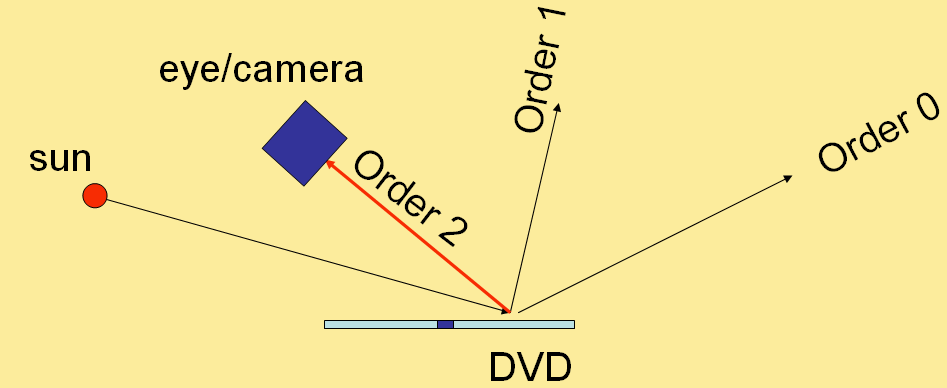
Spectra without a slit
Joachim Köppen Kiel/Strasbourg/Illkirch Spring 2007
It is possible to obtain surprisingly good spectra of the Sun without any slit: We place a DVD (it also works with a CDROM - see below) in such a way that the sunlight falls on it at a very oblique angle, as indicated in the sketch below. A good starting point is to make the CDROM nearly parallel to the Sun's light rays. If we look nearly face-on to the DVD, we see the colours of the first order spectrum, since the deflection angle is about 50° for green light, but if we look from nearly the same direction where the Sun is (deflection angle 100°) we can observe the second order spectrum, too.

Now we use a small trick: we change the distance of the eye (or the camera) to the DVD. If the DVD is quite far, about 40 cm, we will see the spectrum in a narrow colourful band across the face of the disk (left image below). If we approach the DVD, this band becomes broader, until at a distance of a few centmetres, the spectrum fills almost the entire disk (right image). At this point, our eye is at the focus, into which the curved tracks reflect all their second-order light, as we had seen in the experiment at night.
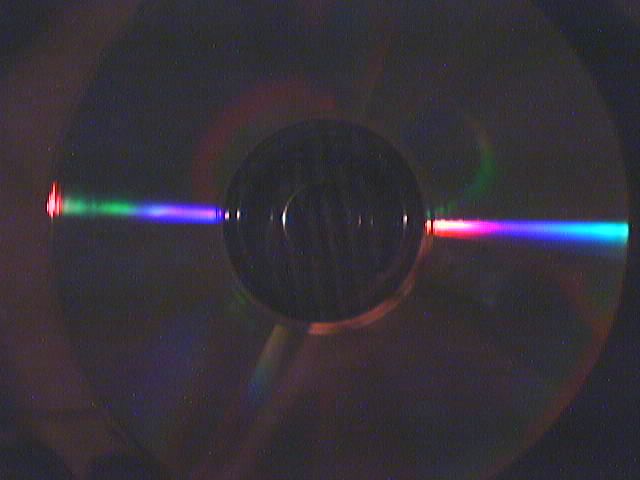
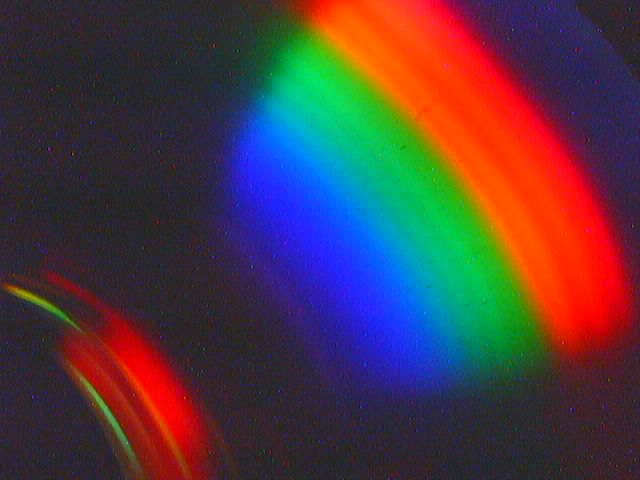
If somebody looks at you now, he will see that your eye is lit up by the reflected spectral colours! Very nice to see! The picture on the right shows what a webcam sees from that position: the H and K lines are present. As seen in the top half, some lines can more easily be seen if we convert the colour image into a grayscale image.
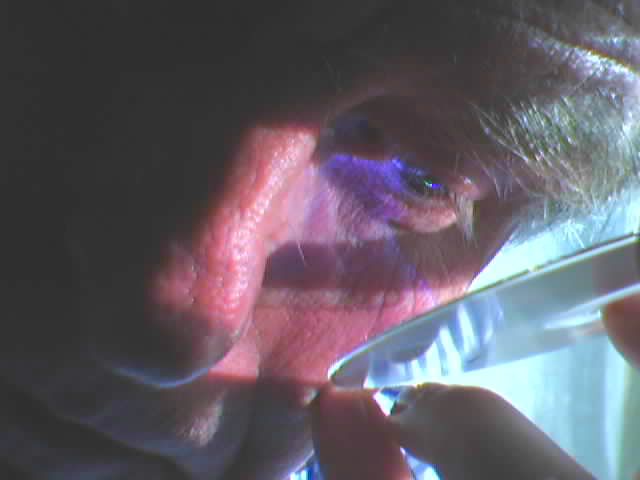
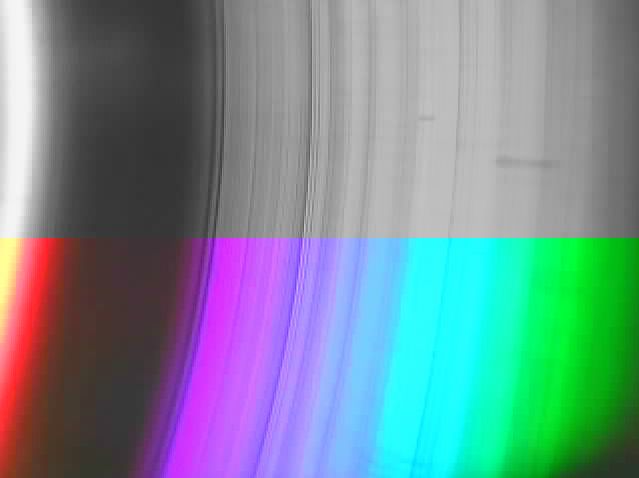
In this position you can place your camera and take pictures ... the focal length of its lens determines the wavelength scale. For instance, with a wide-angle lens of 35 mm focal length, one gets a good portion of the spectrum:

I show only the central band of the images, about 1/10th of the true height! The exposure times were 1/1000th of a second. On the left, we see the red part of the first order spectrum, while the blue and green are of second order. The H and K lines in the extreme violet are most prominent (because the normal photographic film is sensitive up to that region), Hg in the middle of the blue, Hb in the blue-green, and the green Mg b triplet can be discerned. Below is a spectrum taken with a 50 mm lens, which shows a correspondingly smaller wavelength region:

You may compare this with a spectrum taken with the Mk II spectroscope with a proper slit and a CDROM in second order reflection:

One notes that the the lines in the DVD spectrum are more diffuse ... This has two reasons: First of all, there is no real slit, the fairly small angular size of the Sun of about 0.5° serves as a "slit", but obviously is too large. There is also the problem of focussing: I noticed that I could not focus the camera at a single best setting with the image becoming more diffuse if I turn the focussing ring on either side ... Setting the lens at infinity was the best I could get, and experiments with a webcam indicate that one probably needs to focus the lens to 'farther than infinity'! Experimnetation is invited here.
If one points towards the yellow and red part of the second order spectrum, a 50 mm lens gives this result: there is the overlap region with the violet part of the third order spectrum, with the strong H and K lines:

Using a telephoto lens of 100 mm focal length gave a nice image of the green region, with the lines of the magnesium 'b' triplet being clearly resolved, as well as other fainter lines, mostly from iron:

Finally, a test with a cheap webcam shows the green-yellow-red of second order and the blue-green of third order, with several lines clearly present (including Na D in the orange), despite the coarse resolution of only 640 pixels:

Using a CDROM
This technique also works with a CDROM, but here the deflection angle is only about 20° for first order, and thus one has to look almost perpendicular onto the disk for the second order. Usually CDROMs are brighter than DVDs, and thus it is possible to look at third or even fourth order. Just hold the CDROM close in front of your eyes, and nearly parallel to the sun's rays.
Which disk is better? Neither! Because the spectral resolution depends essentially on the deflection angle, a CDROM in fourth order will give a similar wavelength scale as a DVD in second order!